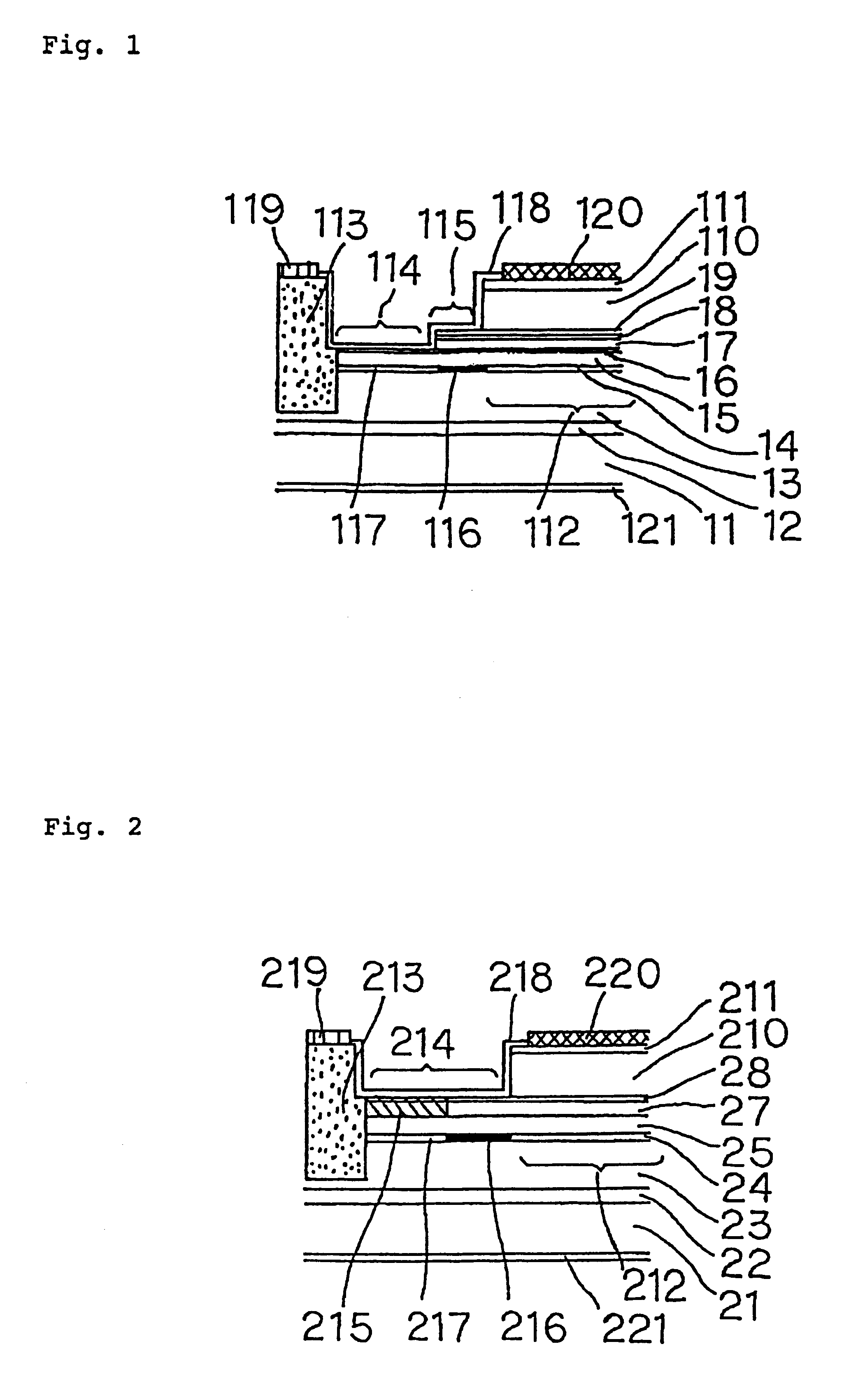Planar-type avalanche photodiode
a photodiode and avalanche technology, applied in the direction of basic electric elements, electrical apparatus, semiconductor devices, etc., can solve the problems of tunnel dark current liable to generate in the photo-absorption layer, the field strength of the photo-absorption layer in the edge section becomes too high, and the tunnel dark current is liable to increas
- Summary
- Abstract
- Description
- Claims
- Application Information
AI Technical Summary
Benefits of technology
Problems solved by technology
Method used
Image
Examples
first embodiment
Referring to FIG. 1, a first embodiment is described. Firstly, on a semi-insulating (SI-) InP substrate 11, a p-type buffer layer 12 with a thickness of about 1 .mu.m, a p.sup.- -type InGaAs photo-absorption layer 13 with a thickness of 1.about.1.5 .mu.m, a p.sup.+ -type InP field buffer layer 14 with a thickness of 30.about.100 nm, an undoped InAlGaAs / InAlAs superlattice multiplication layer 15 with a thickness of 0.27 .mu.m, an undoped InP third etching stop layer 16 with a thickness of 10 nm, an n.sup.+ -type InAlAs second cap layer 17 with a thickness of 0.1 .mu.m, an n.sup.+ -type InGaAs second etching stop layer 18 with a thickness of 10 nm, an n.sup.+ -type InP first etching stop layer 19 with a thickness of 10 nm, an n.sup.+ -type InAlAs first cap layer 110 with a thickness of 0.5 .mu.m and an n.sup.+ -type InGaAs contact layer 111 with a thickness of 0.1 .mu.m are grown in succession by the gas-source molecular beam epitaxy (MBE) method.
Next, in a peripheral region of a cir...
second embodiment
Referring to FIG. 2, a second embodiment is described. Firstly, on a SI-InP substrate 21, a p-type buffer layer 22 with a thickness of about 1 .mu.m, a p.sup.- -type InGaAs photo-absorption layer 23 with a thickness of 1.about.1.5 .mu.m, a p.sup.+ -type InP field buffer layer 24 with a thickness of 30.about.100 nm, an undoped InAlGaAs / InAlAs superlattice multiplication layer 25 with a thickness of 0.27 .mu.m, an n.sup.+ -type InAlAs second cap layer 27 with a thickness of 0.1 .mu.m, an n.sup.+ -type InP etching stop layer 28 with a thickness of 10 nm, an n.sup.+ -type InAlAs first cap layer 210 with a thickness of 0.4 .mu.m and an n.sup.+ -type InGaAs contact layer 211 with a thickness of 0.1 .mu.m are grown in succession by the gas-source MBE method.
Next, in a peripheral region of a circular photo-sensitive region 212 with a diameter of 25 .mu.m, a ring-shaped isolation trench 214 with a width of 3.about.10 .mu.m is formed by selective etching using the etching stop layer 28. There...
PUM
 Login to View More
Login to View More Abstract
Description
Claims
Application Information
 Login to View More
Login to View More - R&D
- Intellectual Property
- Life Sciences
- Materials
- Tech Scout
- Unparalleled Data Quality
- Higher Quality Content
- 60% Fewer Hallucinations
Browse by: Latest US Patents, China's latest patents, Technical Efficacy Thesaurus, Application Domain, Technology Topic, Popular Technical Reports.
© 2025 PatSnap. All rights reserved.Legal|Privacy policy|Modern Slavery Act Transparency Statement|Sitemap|About US| Contact US: help@patsnap.com



